
August 2012
Welcome to Net Results EXPRESS
Net Results EXPRESS (NRx) is an award-winning, monthly e-newsletter highlighting medical and scientific breakthroughs, major grants and honours awarded, and other research-related events at UHN. Through NRx you can read about ongoing research at our five research institutes, the Ontario Cancer Institute (OCI), the Toronto General Research Institute (TGRI), the Toronto Western Research Institute (TWRI), the Toronto Rehabilitation Institute (TRI) and the Techna Institute for the Advancement of Technology for Health (TECHNA). We hope you will find this newsletter informative and helpful. If you have feedback or questions, please contact www@uhnresearch.ca. Christopher J. Paige, PhD, FCAHS |
Cancer: Molecular Mechanisms of Cellular Polarity
OCI Director and Senior Scientist Dr. Benjamin Neel, along with postdoctoral fellow Dr. Ziqiang Wang and OCI colleagues Drs. Mitsuhiko Ikura and Senthil Muthuswamy, recently published a paper in Molecular Cell that uncovered a new mechanism by which cell signalling proteins communicate with the cell polarity machinery. “PAR proteins” are known to be essential regulators of polarity, with different PAR family members responsible for various aspects of cell polarity. The team showed that a family of signalling proteins, called the Grb2-associated binder (GAB) proteins, help control cell polarity by acting as a scaffold to bring together the PAR proteins PAR1 and PAR3. This enables PAR1 to regulate the function of PAR3. The GAB1 protein, when over-expressed, promotes scattering of epithelial cells and disrupts cyst formation—both are signs of abnormal epithelial cell behavior and polarity. “Previous studies have implicated GAB proteins in tumour formation,” explains Dr. Neel. “Given their newly discovered involvement in polarity, ongoing studies should clarify the extent to which the GAB/PAR interactions contribute to the cancer-causing activity of GAB proteins.” The signaling adaptor gab1 regulates cell polarity by acting as a par protein scaffold. Yang Z, Xue B, Umitsu M, Ikura M, Muthuswamy SK, Neel BG. Molecular Cell. 2012 August 10. [Pubmed abstract] This work was supported by the National Institutes of Health, the Canadian Cancer Society Research Institute, the Department of Defense Breast Cancer Research Program, the Ontario Ministry of Health and Long-Term Care and The Princess Margaret Hospital Foundation. Dr. Neel is a Tier I Canada Research Chair in Signal Transduction and Human Disease and Dr. Ikura is a Tier I Canada Research Chair in Cancer Structural Biology.. |
Medical Imaging: First Microbubble with Dual Imaging Properties
The porshe microbubble has built-in properties that allow it to be simultaneously visualized through ultrasound (US) and photoacoustic (PA) imaging. US is a popular and safe imaging technique and PA imaging provides a greater resolution of imaging than any other optical method. By combining these different techniques, visualization of the porshe microbubble allows for a greater range of safer and effective imaging. For example, it could be used to better view organs, tumours or complications from a medical condition. Commenting on the significance of this new particle, first author Elizabeth Huynh, a doctoral student at OCI, says, “This is the first, inherently dual US/PA agent made in a one-step synthesis. These porshe microbubbles have a broad range of potential use. In addition to medical imaging, they can also be used to deliver therapeutics to specific sites in the body or remodel the organization of blood vessels.” Porphyrin shell microbubbles with intrinsic ultrasound and photoacoustic properties. Huynh E, Lovell JF, Helfield B, Jeon M, Kim C, Goertz DE, Wilson BC, Zheng G. Journal of the American Chemical Society. 2012 July 24. [Pubmed abstract] This work was supported by The Princess Margaret Hospital Foundation, the Ministry of Knowledge Economy of South Korea, the National Science & Engineering Council of Canada, the Canadian Institutes of Health Research, the Canada Foundation for Innovation and the Joey and Toby Tanenbaum/Brazilian Ball Chair in Prostate Cancer Research. |
Leukemia: A New Molecular Target for Therapy
The team characterized a previously unknown form of this molecule, termed sCD200, in the blood plasma of CLL patients. sCD200 was found to be easily dissolved in blood. Levels of sCD200 were significantly elevated in CLL patients and there was a strong correlation of this with disease stage. CLL patient plasma injected into an experimental model enhanced the growth and survival of CLL cells—a finding not observed when using normal plasma from healthy controls or CLL plasma depleted of sCD200. “Our findings point to sCD200 as a new prognostic marker and potential therapeutic target for CLL,” says Dr. Gorczynski. “Moreover, the experimental model described here may prove valuable for the preclinical assessment of new treatment regimens for CLL.” Soluble CD200 is critical to engraft chronic lymphocytic leukemia cells in immunocompromised mice. Wong K, Brenneman F, Chesney A, Spaner DE, Gorczynski RM. Cancer Research. 2012 August 8. [Pubmed abstract] This work was supported by the Canadian Institutes of Health Research, Canadian Cancer Society Research Institute and the Leukemia and Lymphoma Society of Canada. |
Medical Care: How Surgical Culture Affects Error
TGRI Clinician Scientist Dr. Carol-Anne Moulton addresses this conflict by providing a conceptual framework to better understand the expectations placed on surgeons and how these may be involved in surgical error. Dr. Moulton explores the “hidden curriculum”—in which surgeons-in-training learn through example to display characteristics such as decisiveness, speed, optimism and confidence. It is suggested that this “surgical identity,” while providing surgeons with the ability to persevere in the face of obstacles, must be tempered by a willingness to show uncertainty and seek help when necessary. Dr. Moulton stresses that, “Developing this framework will help surgeons become aware of the social pressures placed on them, so that they can better manage the conflicting feelings that arise during uncertain situations. This awareness will make them more likely to stop and think, to ask for help when needed, and to more fully devote the mental resources required to resolve problems, thereby reducing surgical error.” Pressures to "measure up" in surgery: Managing your image and managing your patient social pressures and clinical judgment. Jin CJ, Martimianakis MA, Kitto S, Moulton CA. Annals of Surgery. 2012 July 20. [Pubmed abstract] This work was supported by a Physician’s Services Incorporated Grant and an Early Researcher Award from the Ministry of Economic Development and Innovation. |
Respiration: New Educational Objectives for Mechanical Ventilation Practice
To achieve this goal, Dr. Ferguson and his team employed the Delphi method, a communication strategy in which participants answer multiple rounds of questionnaires, with a facilitator providing an anonymous summary of the input after each round. The goal is to focus the range of responses towards a consensus on a final set of statements—a technique considered more accurate than responses collected in an unstructured manner. Fourteen international experts in mechanical ventilation, resident educators, education experts and community intensivists across North America participated via email, resulting in a set of 56 learning objectives finalized for inclusion into the list. “These objectives can be immediately used by clinical teachers to guide bedside and didactic teaching during intensive care unit rotations,” explains lead author Dr. Ewan Goligher. “This is a significant first step for establishing core competency for residents in medicine, anesthesia and surgery who may care for mechanically ventilated patients.” Core competency in mechanical ventilation: Development of educational objectives using the Delphi technique. Goligher EC, Ferguson ND, Kenny LP. Critical Care Medicine. 2012 July 20. [Pubmed abstract] This work was supported by the Canadian Institutes of Health Research. |
Rehabilitation: Measuring Activity with Brain Computer Interface Systems
To address this issue, TRI Affiliate Scientist and Vice President, Research at the Holland Bloorview Kids Rehabilitation Hospital Dr. Tom Chau and his team have developed a more consistent and accurate system for classifying NIRS signals. Experimental tests on the NIRS-BCI system showed that it accurately distinguished when a person was performing a mental arithmetic task and when they were not consciously using their brain. While accuracy remained high if the task was repeated in a single session, it decreased when the test was performed in two separate sessions. According to Dr. Chau, “Selecting a training program for the use of an NIRS-BCI system may require a compromise between accuracy and session length and will have to be based on the user’s preferences, needs and abilities.” Intersession consistency of single-trial classification of the prefrontal response to mental arithmetic and the no-control state by NIRS. Power SD, Kushki A, Chau T. PLoS One. 2012 July 23. [Pubmed abstract] This work was supported by the the Natural Sciences and Engineering Research Council of Canada. Dr. Chau is a Tier II Canada Research Chair in Rehabilitation Engineering. |
 |
![]()
UHN is thankful for the combined efforts of philanthropists Robert and Linda Krembil, the Canada Foundation for Innovation, the Toronto General & Western Hospital Foundation and generous donors who have helped to fund the creation of this important research endeavour.
For more information please visit www.krembildiscoverycentre.ca.
 "bant"—an application for smartphones designed to help patients with diabetes—recently won the People’s Choice award at the inaugural World Congress mobile Health (mHealth) Innovation Exchange Conference in Boston, MA.
"bant"—an application for smartphones designed to help patients with diabetes—recently won the People’s Choice award at the inaugural World Congress mobile Health (mHealth) Innovation Exchange Conference in Boston, MA. Designed by a team led by Dr. Joseph Cafazzo, co-lead of the Techna Design and Engineering for Health Core and head of the Centre for Global eHealth Innovation, bant helps type 1 diabetics record and track their blood sugar levels, interfacing seamlessly with a blood sugar test unit (glucometer) for easy self-reporting. Trends in data are analyzed instantly and can be integrated between the smartphone and the patient’s health record. bant is an example of the use of new technology designed to help relieve some of the burden from traditional health care providers.
 The Canadian Common CV is a web-based application that provides researchers with a unified approach to gathering CV information required by a network of federal, provincial and not-for-profit research funding organizations. The Canadian Institutes of Health Research (CIHR) recently posted new information and tips for CIHR grant applicants in the research community.
The Canadian Common CV is a web-based application that provides researchers with a unified approach to gathering CV information required by a network of federal, provincial and not-for-profit research funding organizations. The Canadian Institutes of Health Research (CIHR) recently posted new information and tips for CIHR grant applicants in the research community.For a full list of updates to the Common CV system, please visit www.cihr-irsc.gc.ca/e/45640.html, watch the Common CV tutorial video or visit www.ccv-cvc.ca for more information.
Additional details include research funding and publication activity of the Centre, commercialization activity of AARC scientists, awards received in 2011 and a message from the Arthritis Research Foundation.
To download the 2011 AARC Activity Report, please click here.
Feedback
Net Results EXPRESS is brought to you by UHN Research Communications. We hope you have enjoyed receiving this message. If you have any feedback, please email www@uhnresearch.ca.
To access archived issues of Net Results EXPRESS, visit uhnresearch.ca/news/netresultsexpress
Some images adapted from the image archives of stock.xchng.ca and Wikipedia.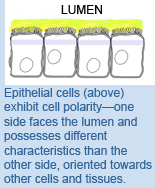 Almost all cells in our bodies exhibit some sort of polarity—this refers to spatial differences in cell shape, structure and function—that enables them to carry out specialized functions. A classic example is provided by epithelial cells, which adhere together to form the surface lining of internal cavities like the digestive tract. Maintaining polarity is vital for proper cell functioning, and a breakdown in polarity is one of the hallmarks of cancer. While there has been progress in identifying different components involved in polarity, how it is regulated remains poorly understood.
Almost all cells in our bodies exhibit some sort of polarity—this refers to spatial differences in cell shape, structure and function—that enables them to carry out specialized functions. A classic example is provided by epithelial cells, which adhere together to form the surface lining of internal cavities like the digestive tract. Maintaining polarity is vital for proper cell functioning, and a breakdown in polarity is one of the hallmarks of cancer. While there has been progress in identifying different components involved in polarity, how it is regulated remains poorly understood.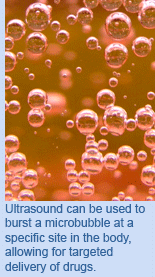 A team of UHN researchers, led by OCI Senior Scientists and Techna faculty members Drs.
A team of UHN researchers, led by OCI Senior Scientists and Techna faculty members Drs. 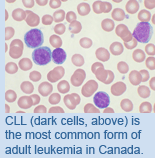 Chronic lymphocytic leukemia (CLL) is a type of cancer that alters the immune system of an affected patient. While some patients respond well to treatment, others die of this disease shortly after diagnosis. Previous research has suggested that the immune system’s ability to kill CLL cells may be suppressed in part by increased amounts of a molecule, known as CD200, that is commonly found alongside many tumours. TGRI Senior Scientist Dr.
Chronic lymphocytic leukemia (CLL) is a type of cancer that alters the immune system of an affected patient. While some patients respond well to treatment, others die of this disease shortly after diagnosis. Previous research has suggested that the immune system’s ability to kill CLL cells may be suppressed in part by increased amounts of a molecule, known as CD200, that is commonly found alongside many tumours. TGRI Senior Scientist Dr. 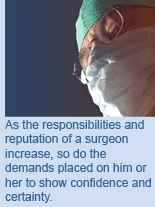 A key skill of a good surgeon is the ability to cope with the unexpected during routine surgical procedures. Of particular importance is the ability to shift to a heightened state of mindfulness that has been described as “slowing down when you should.” However, surgeons are expected to act decisively and with confidence—a product of medical culture and expectations within the operating room—and internal conflicts may arise in the decision making process of surgeons.
A key skill of a good surgeon is the ability to cope with the unexpected during routine surgical procedures. Of particular importance is the ability to shift to a heightened state of mindfulness that has been described as “slowing down when you should.” However, surgeons are expected to act decisively and with confidence—a product of medical culture and expectations within the operating room—and internal conflicts may arise in the decision making process of surgeons.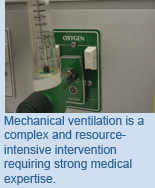 Mechanical ventilation—a method to mechanically assist spontaneous breathing—is a life-saving intervention that is used during operations or for critical illnesses. However, it is a difficult method to employ and is often associated with significant morbidity and mortality. In an effort to reduce these negative outcomes and better educate front-line health care practitioners on using best practices related to mechanical ventilation, TWRI Scientist Dr. Niall Ferguson has created a new set of educational objectives for a competency-based curriculum in support of this intervention.
Mechanical ventilation—a method to mechanically assist spontaneous breathing—is a life-saving intervention that is used during operations or for critical illnesses. However, it is a difficult method to employ and is often associated with significant morbidity and mortality. In an effort to reduce these negative outcomes and better educate front-line health care practitioners on using best practices related to mechanical ventilation, TWRI Scientist Dr. Niall Ferguson has created a new set of educational objectives for a competency-based curriculum in support of this intervention.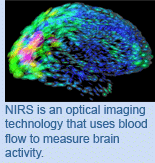 People without any voluntary motor control—including those born with disabilities or those that become disabled through injury—currently lack devices that enable them to communicate and interact with their environment. Brain-computer interface (BCI) systems offer an alternative for these patients, as they are controlled by brain activity and not physical movement. One version of a BCI system measures brain activity by using near infrared spectroscopy (NIRS) to generate signals that are subsequently assigned to specific tasks. However, if the brain responds differently with task repetition, it could result in inconsistencies when the BCI system is put into practical use.
People without any voluntary motor control—including those born with disabilities or those that become disabled through injury—currently lack devices that enable them to communicate and interact with their environment. Brain-computer interface (BCI) systems offer an alternative for these patients, as they are controlled by brain activity and not physical movement. One version of a BCI system measures brain activity by using near infrared spectroscopy (NIRS) to generate signals that are subsequently assigned to specific tasks. However, if the brain responds differently with task repetition, it could result in inconsistencies when the BCI system is put into practical use.